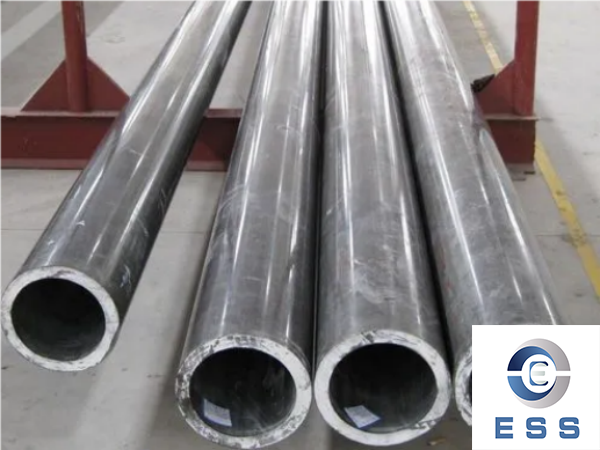Choosing the Right Hydraulic Tube for Your Application
Hydraulic systems play a vital role in a wide range of industries, from manufacturing and construction to transportation and aerospace. Central to the functionality of hydraulic systems is the hydraulic tube, which serves as the conduit for transmitting fluid under pressure. Selecting the appropriate hydraulic tube for your application is crucial to ensure optimal performance, efficiency, and safety. In this comprehensive guide, we will explore the key factors to consider when choosing the right hydraulic tube for your specific needs.

Understanding Hydraulic Tubes
Hydraulic tubes are hollow cylinders designed to withstand high pressure and transmit hydraulic fluid within a system. They are commonly made from steel, stainless steel, or various alloys, ensuring durability and resistance to corrosion. The correct choice of material depends on factors such as pressure requirements, environmental conditions, and the nature of the fluid being transmitted.
Identifying Pressure Requirements
One of the primary considerations when selecting a hydraulic tube is the pressure rating it can withstand. The maximum working pressure of the tube should exceed the highest pressure expected within the system. It is important to account for both continuous and peak pressures to ensure the tube can handle the demands of the application without compromising safety or efficiency.
Determining Tube Size
The size of the hydraulic tube is determined by its inside diameter (ID) and wall thickness. The inner diameter affects the flow rate and pressure drop, while the wall thickness influences the tube's strength and resistance to bending. It is crucial to strike a balance between these factors to ensure optimal performance. Hydraulic tube sizes are standardized, and selecting the appropriate size involves considering factors such as fluid viscosity, flow rate, and pressure requirements.
Considering Material Selection
The choice of material for hydraulic tubes depends on several factors, including the nature of the fluid, operating temperature, and environmental conditions. Steel tubes are widely used due to their strength, affordability, and resistance to high pressures. Stainless steel tubes offer superior corrosion resistance and are ideal for applications involving corrosive fluids or environments. Alloy tubes provide specific properties such as enhanced strength, heat resistance, or lightweight characteristics for specialized applications.
Evaluating Environmental Factors
Environmental conditions can significantly impact the performance and lifespan of hydraulic tubes. Factors such as temperature variations, exposure to chemicals, moisture, and abrasive substances should be considered when choosing the right tube. For instance, if the application involves outdoor use or exposure to harsh chemicals, a tube with corrosion-resistant properties or protective coatings may be necessary.
Assessing Compatibility with Fluids
The type of fluid being transmitted through the hydraulic system is another critical factor in tube selection. Different fluids have varying chemical compositions, viscosities, and operating temperatures. Some fluids may be highly corrosive or reactive, requiring specialized tube materials or coatings. It is important to consult fluid compatibility charts and guidelines provided by manufacturers to ensure the chosen tube can withstand the specific fluid's properties without degradation.
Examining Bending and Flexibility
In hydraulic systems, tubes often need to bend and flex around obstacles or machinery. The tube's ability to withstand bending without kinking or collapsing is crucial for smooth operation. Factors such as the tube's wall thickness, material properties, and bend radius specifications need to be considered to ensure the tube can handle the required bending and flexing without compromising its integrity.
Understanding Tube Fittings and Connections
Proper tube fittings and connections are essential for leak-free operation and system integrity. The choice of fittings should align with the tube size and material. Common types of fittings include flare fittings, O-ring face seal fittings, and compression fittings. It is important to ensure compatibility between the tube and fittings to prevent leaks and maintain system performance.
Compliance with Industry Standards
Hydraulic tubes must meet specific industry standards to ensure safety and reliability. It is essential to select tubes that comply with relevant standards such as SAE (Society of Automotive Engineers), ISO (International Organization for Standardization), or DIN (Deutsches Institut für Normung) standards. Compliance with these standards ensures that the hydraulic tube has undergone rigorous testing and meets the necessary quality requirements.
Conclusion
Choosing the right hydraulic tube for your application is crucial for the smooth operation and longevity of hydraulic systems. Factors such as pressure requirements, tube size, material selection, environmental conditions, fluid compatibility, bending capabilities, and industry standards all play a significant role in making an informed decision. By carefully evaluating these factors and consulting with manufacturers or industry experts, you can select a hydraulic tube that meets your specific needs, ensuring optimal performance, efficiency, and safety in your hydraulic system.
Read more: Understanding the Different Types of Seamless Hydraulic Tubes













 Eastern Steel Manufacturing Co.,Ltd not only improve product production and sales services, but also provide additional value-added services. As long as you need, we can complete your specific needs together.
Eastern Steel Manufacturing Co.,Ltd not only improve product production and sales services, but also provide additional value-added services. As long as you need, we can complete your specific needs together.










